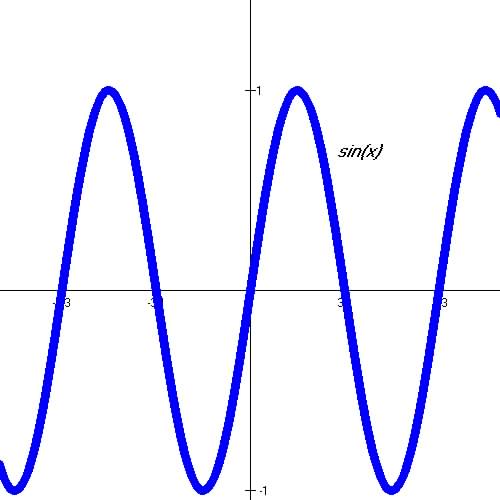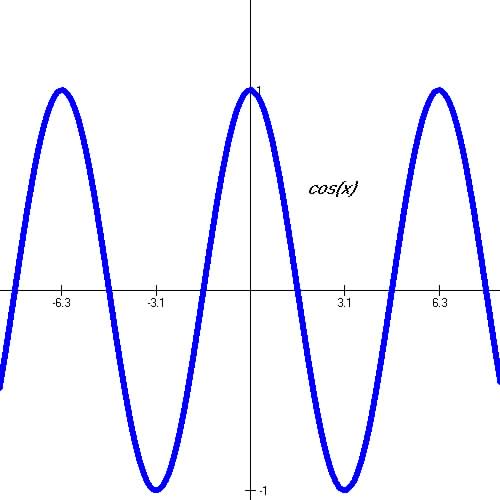***********
Content to
Trigonometry
Project (Content of each Quadrant)
The trigonometric functions can be viewed as either:
(a) Functions of angles and
(b) functions of real numbers.
This textbook will focus on the former. Trigonometric is used in
physical
science, engineering, computer science, biology
and almost all the sciences.
Here are some general properties and formulas associated with trigonometry.
These will be discussed in more detail in later sections of this text.
There are two systems used to measure angles. The most common is the
degree.
There are 360 degrees in a circle or it takes
360 degrees to complete a revolution about the center of a
circle.
The other system of measuring angles is the radian. There are ![]() radians in a circle or it takes
radians in a circle or it takes ![]() radius to complete a revolution about a circle.
radius to complete a revolution about a circle.
| Relationship between
Degrees and
Radians
|
Convert Degrees to Radians
To convert degrees to radian multiply degrees by ![]()
Examples:
|
|
|
|
|
|
|
|
|
|
|
|
Convert Radians to Degrees
To convert degrees to radian multiply degrees by ![]()
Examples:
|
|
|
|
|
|
|
|
|
|
|
Traditionally portions of a degree can be measures with minutes
and
seconds. One minute is written as 1', i.e. ![]()
![]()
One second is written as 1", i.e. ![]()
![]()
Show that (a) ![]()
(b) ![]() and
and
(c) ![]()
See
how to do conversions with calculator.
| Length
of a Circular
Arc
In a circle of radius r, the length s of an arc that subtends
a central
angle of
This is often used to measure large distances in space |
The properties of right triangles are often used to measure
distances
indirectly of the world around us.
Often its is physically impossible to measure these distances without
trigonometry.
For the right triangle with a base angle of ![]() ,
the opposite (opp) side to the angle is often labeled a
or y,
,
the opposite (opp) side to the angle is often labeled a
or y,
the adjacent (adj) side labeled b or x
and the hypotenuse (hyp) c or r.
Here x represents the value of the x-coordinates of
the
triangle, y represents the value of the y-coordinate
and
r represents the radius of the circle the length
of the hypotenuse.
| Pythagorean theorem:
|
The trigonometric functions are functions that relates the angles of
a right triangle with that of the ratio of the sides of the triangles.
| Trigonometric Ratios
|
See ratios of common Right Triangles:
Examples of Problems with Right Triangles
The trigonometric functions are typical of relationships of various
attributes with respect to another usually time.
These functions are called periodic functions since they tend to cycle
from a minimum to maximum values and visa versa.
Graphs
of Sine and Cosine Functions
Graph of y=sin(x)
 |
Graph of y=cos(x)
 |
The graphs of periodic functions consist of some standard parameters:
The midline or average or mean is the midpoint between the maximum and minimum value of the function and is often designated D.
The Amplitude is the absolute value of the maximum minus the
midpoint of the function and designated A.
(The maximum and minimum of the function are related to the Range
of the function)
The period of the function is the time it takes or angle
required
to define movement of the function from a maximum
to the next maximum or minimum to the next minimum of the function
and is designated P.
The period, P is related to the frequency, B which is often
stated
in the formula of the periodic function.
For both the sine and cosine functions the relationship between P and
B is:
![]()
The difference between the sine and cosine graph is that:
When t = 0 the sine function starts at the midpoint and
When t = 0 the cosine function starts at the maximum point of the graph
Examples
of Sinusoidal Function Problems
| For the sinusoidal
functions
|A| is the amplitude (maximum - midpoint) y = D is the midline (maximum + minimum)/2 h is the horizontal shift The period: |B| is the angular frequency or the number of cycles completed
between |
Phase shift and horizontal shift.
The horizontal shift is the movement of the entire function horizontally from its expected position when t = 0 and is represented by h in y=sinB(t-h).
The phase shift is the fraction of a full period that the curve shifts and is represented by C in y=sin(Bt-C)